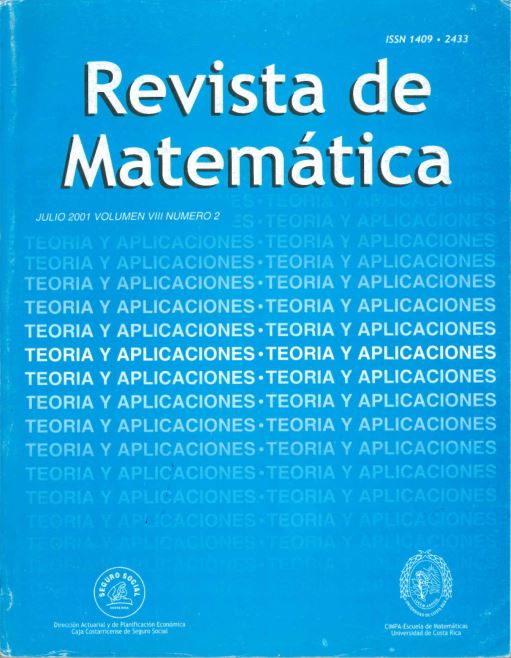Resumen
En este artículo introducimos un concepto basado en el método diferencial de restricciones para examinar el procedimiento de clausura en Modelos de Turbulencia. Mostramos como este concepto puede ser aplicado para estudiar el problema de interacción y mexclado entre dos campos de flujo turbulento homogéneo semi-infinito de diferentes escalas.
Citas
Yanenko, N. N. (1991) Selected Works. Nauka, Moscow (in Russian).
Sidorov, A. F.; Shapeev, V. P.; Yanenko, N. N. (1984) The Differential Constraints Method and its Application to Gas Dynamics. Nauka, Novosibirsk (in Russian).
Ilyushin, B. B. (2000) “Higher-moment diffusion in stable stratification”, in: B.E. Launder & N.D. Sandham (Eds.) Closure Strategies for Turbulent and Transition Flows, Cambridge University Press (in press).
Ilyushin, B. B. (1999) “Model of fourth–order cumulants for prediction of turbulent transport by large–scale vortex structure”, J. Appl. Mechan. Tech. Phys. 40(5): 871–876.
Lamb, R. G. (1982) “Diffusion in convective boundary layer”, in: F.T.M. Nieuwstadt & H. van Dop (Eds.) Atmospheric Turbulence and Air Pollution Modelling, Reidel, Boston MS.
Hazen, A. M. (1963) “To nonlinear theory of appearance of turbulence”, Dokl. Acad. Nauk USSR 163: 1282–1287 (in Russian).
Ogura, Y. (1962) “Energy transfer in a normally distributed and isotropic turbulent velocity field in two dimensions”, Phys. Fluids 5(4): 395–401.
Hanjalic, K.; Launder, B. E. (1972) “A Reynolds stress model of turbulence and its application to thin shear flows”, J. Fluid Mech. 52: 609–638.
Ibragimov, N. H. (1985) Transformation Groups Applied to Mathematical Physics. Reidel.
Kaptsov, O. V. (1995) “B-determining equations: applications to nonlinear partial differential equations”, Euro. J. Appl. Math., 6: 265–286.
Hulshof ,J. (1997) “Selfsimilar solutions of Barenblatt’s model for turbulence”, SIAM J. Math. Anal. Appl. 28(1): 33–48.
Barenblatt, G. I. (1996) Scaling, Selfsimilar and Intermediate Asymptotics. Cambridge Texts in Applied Mathematics, 14.
Polubarinova-Kochina, P. Ya. (1948) “On a nonlinear partial differential equation appearing in the filtration theory”, Dokl. Acad. Nauk USSR, 63(6): 623–626 (in Russian).
Ilyushin, B. B.; Kurbatskii, A.F. (1990) “Numerical simulation of the shearless tur-
bulence mixing layer”, Izv. Acad. Nauk USSR (Siberian Branch), Ser. Tech. Nauk. 3: 62–68 (in Russian).
Veeravalli, S.; Warhaft, Z. (1989) “The shearless turbulence mixing layer”, J. Fluid Mech. 207: 191–229.
Grebenev, V. N. (1994) “On a certain system of degenerate parabolic equations which arises in Hydrodynamics”, Sib. Math. J. 35(4): 753–767.
Ladyzhenskaya, O. A.; Solonnikov, V.; Ural’ceva N. (1968) Linear and Quasilinear Equations of Parabolic Type. Amer. Math. Soc.
Vishnevskiy, M. P.; Zelenyak, T. I.; Lavrentjev, M. M. (1995) “Large time behavior solutions for nonlinear parabolic equations”, Sib. Math. J. 36(3): 510–530.





